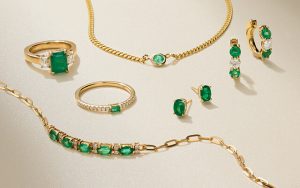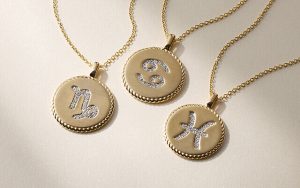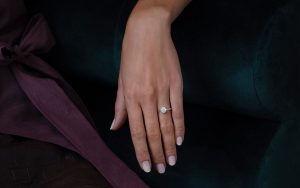14K vs. 18K Gold: Which is Better?
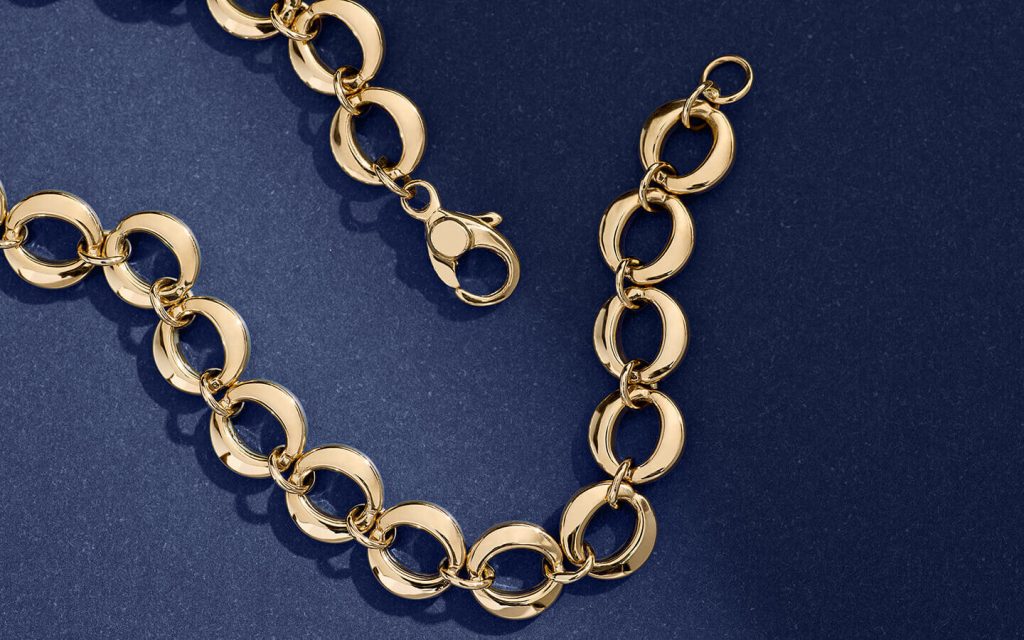
In This Blog
Since gold is a softer metal on its own, it’s often combined with additional metals in a process called alloying to strengthen the finished gold jewelry.
Alloying improves the strength of the jewelry and also makes it more affordable. 14k gold and 18k gold are popular options for fine jewelry.
As with all jewelry, it’s ultimately a personal decision that should match your style, values and budget.
Understanding Gold Jewelry Karat Values
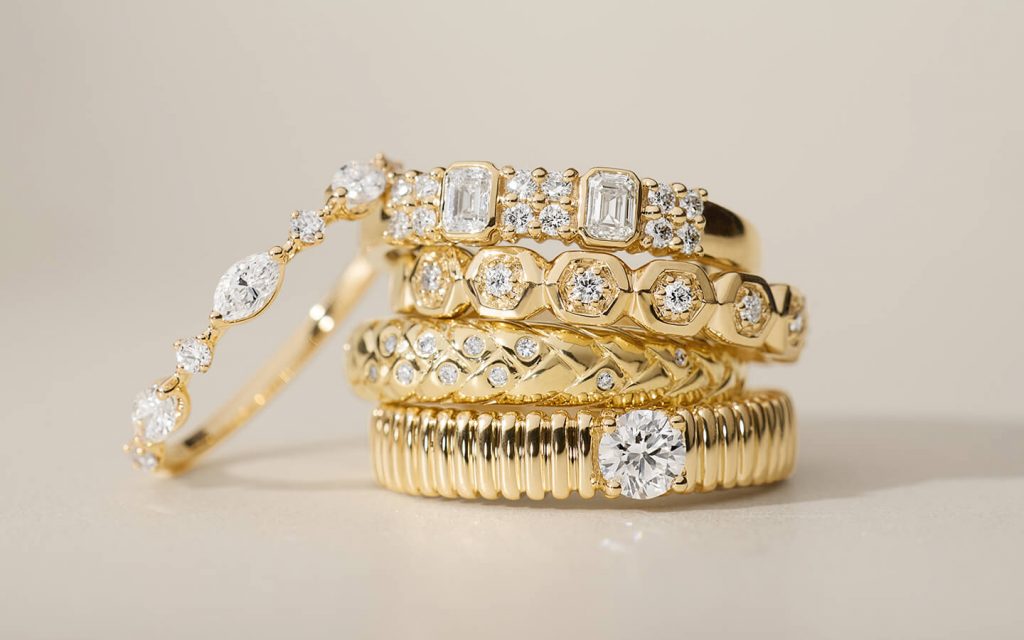
Gold necklaces, earrings, bracelets, rings, and other jewelry styles all have their own karat values that represent the amount of gold in jewelry metals.
Karat measures the purity or fineness of gold based on parts per thousand (ppt), with pure gold holding the full 24 parts in gold. 18k gold, on the other hand, is 18 parts gold and 6 parts alloying metals. 14k gold is 14 parts pure gold and 10 parts alloying metals. The higher the karat number, the more gold in the jewelry.
24k gold, the highest value for gold jewelry, is incredibly soft (you can even bend it with your bare hands!) and has a buttery yellow color. Since it’s so delicate, 24k gold jewelry is not as popular as the more durable 18k and 14k options.
14k and 18k gold jewelry are popular for everyday and luxe fine jewelry given their beauty and strength.
The Main Differences Between 14K vs. 18K Gold
To make the key differences between 14 karat gold and 18 karat gold easy to understand, we’ve broken it down by purity, appearance durability and price.
Metal
Purity
Appearance
Durability
Price
14K Gold
58.3% pure gold
A lighter yellow color
Perfect for frequent wear
More affordable than higher karat values
18K Gold
75% pure gold
Richer yellow color
Softer, so may be more susceptible to light scratching
Heavier gold content results in higher prices for this more luxurious option
The Types of Alloys Used for Gold
14k gold is alloyed with 41.7% added metals, while 18k gold jewelry only has alloy metals in 25% of its composition.
Typically, both types will use the same alloy metals, just in different amounts. Common metals alloyed with pure gold include silver, copper and zinc. These are durable metals that improve the strength of gold.
Appearance
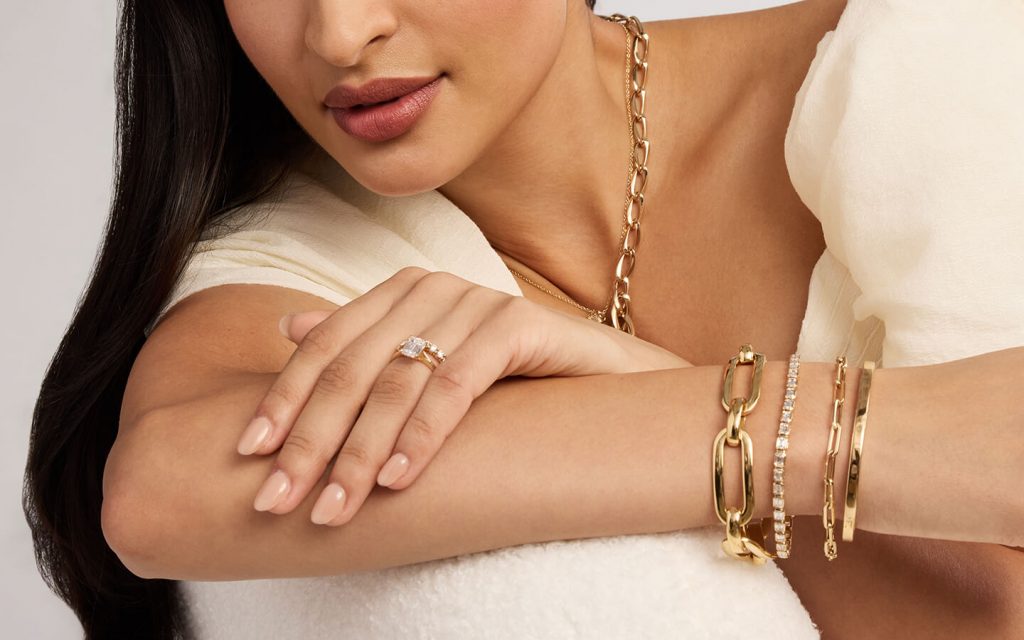
Another notable difference between 14k and 18k gold is how these metals look, especially for yellow gold jewelry. 18k gold will have a richer yellow shade while 14k gold will usually have a lighter yellow color with added tones present.
The visual differences between both 14k and 18k are generally less noticeable in white gold, rose gold or black gold. For rose gold jewelry, 18k may have a softer pink compared to the more vibrant pink shades in14k rose gold jewelry due to copper content differences. In white gold jewelry the visual differences are even smaller due to the rhodium plating used to give this jewelry its signature color.
Variations in the precise alloying between individual jewelry pieces can also impact how they look. Some 14k gold pieces may be alloyed in a way that gives them a richer gold color often associated with 18k gold. It all depends on that piece’s unique alloying.
Durability
Although it’s considered more luxurious, 18k gold jewelry is softer than 14k gold jewelry, so it may be prone to more scratching, especially by harder metals.
14k gold is more durable for frequent wear. It’s an everyday metal that can be worn without as much caution as 18k gold.
Though 18k gold contains more pure gold than 14k, both are exceptionally popular. And both metals are durable, especially when compared to 20k, 22k or 24k gold.
Price
Due to its higher gold content, 18k gold jewelry costs more than 14k gold jewelry.
Hypoallergenic Qualities
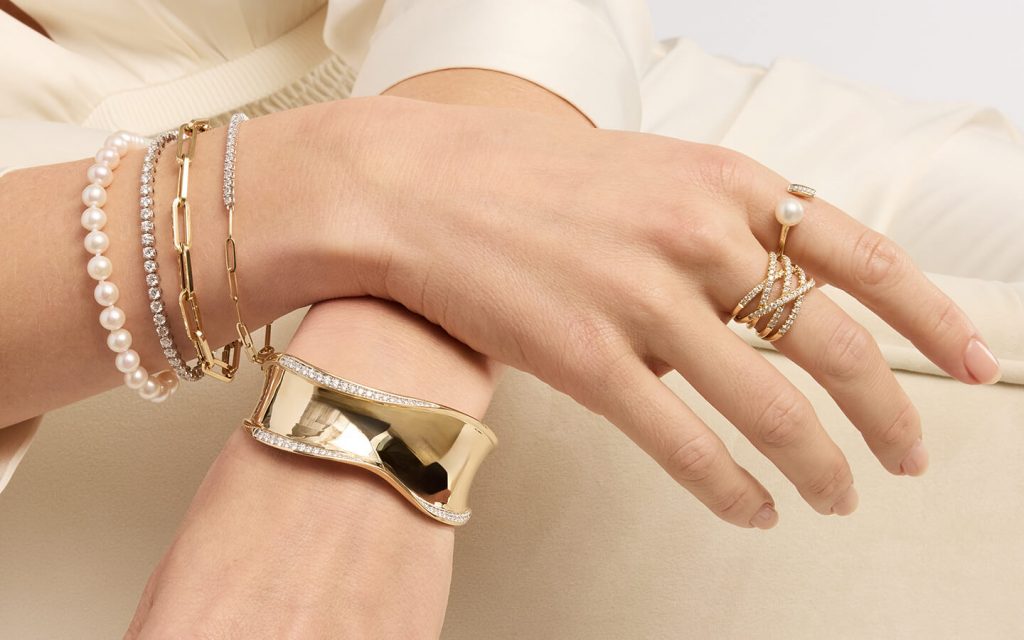
18k gold has a lower concentration of alloyed metals, making it a more popular fit for hypoallergenic jewelry. Depending on your metal sensitivities, you may want to consider platinum jewelry as well.
FAQs About 14K vs. 18K Gold
What is 14k gold?
14k gold is an alloy that’s 58.3% pure gold and 41.7% added metals like copper, silver and zinc. 14k is 14 parts gold and 10 parts alloying metals.
What is 18k gold?
18k gold is an alloy that’s 75% pure gold and 25% added metals such as silver, copper or zinc. 18k is 18 parts gold and 6 parts alloying metals.
Can I wear 18k gold everyday?
Though it is softer than 14k gold, 18k gold jewelry is still a popular option for daily wear. It’s best worn alongside matching 18k pieces.
Which gold is better?
18k and 14k gold are both popular options for jewelry. One is not better than the other, they both offer different benefits and considerations. The “best” gold is the one that matches your budget, style and values.
Both metals are popular options for wedding rings, engagement rings, diamond jewelry, everyday styles, and gemstone jewelry.
Is gold durable?
What kind of gold jewelry does Blue Nile sell?
At Blue Nile, we offer both 14k and 18k gold jewelry. We invite you to visit our local jewelry stores or schedule a virtual jewelry shopping appointment to see your favorite pieces side by side.
Can you wear 14k gold everyday?
Yes, you can wear 14k gold daily. It’s durable enough for frequent wear.
Which lasts longer, 14k or 18k gold?
Both metals are durable heirloom-quality styles. 18k is more susceptible to minor scratching, but its higher gold concentration improves its durability. 14k is more fit for frequent wear, but may require additional cleaning due to higher parts of alloying metals. Both 14k and 18k gold are strong enough for frequent wear.
Choosing Between 18K and 14K Gold
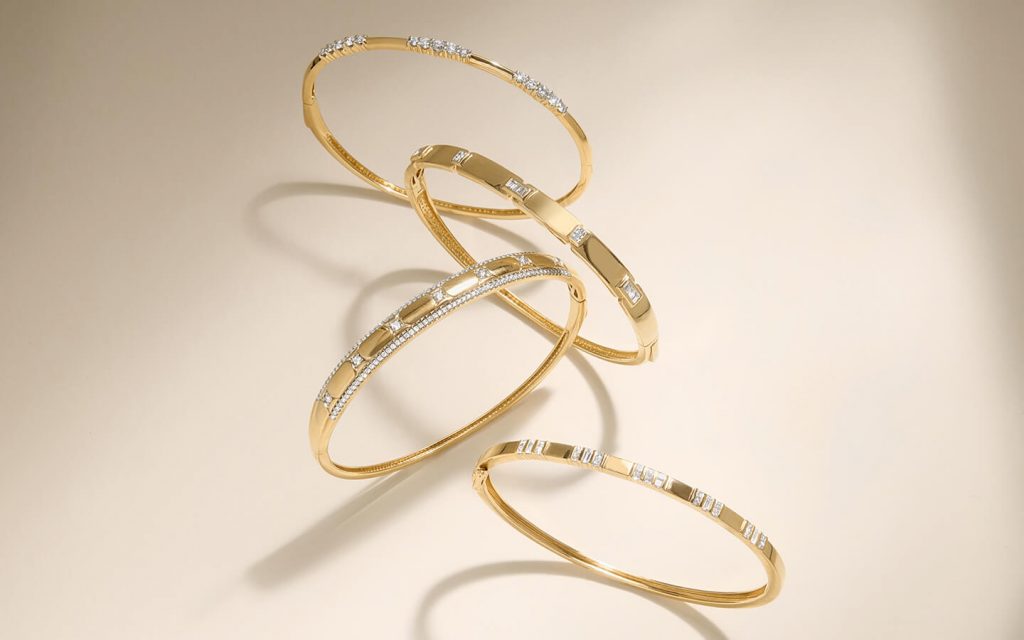
When it comes to jewelry, 14k and 18k are beautiful metals that bring durability and strength. The visual differences between the two are often subtle, especially in colors beyond yellow gold.
Ultimately, gold jewelry is a personal choice that should reflect what is most important to you. Both types of gold are popular for engagement rings, women’s jewelry, men’s jewelry, gifts, and other styles.



